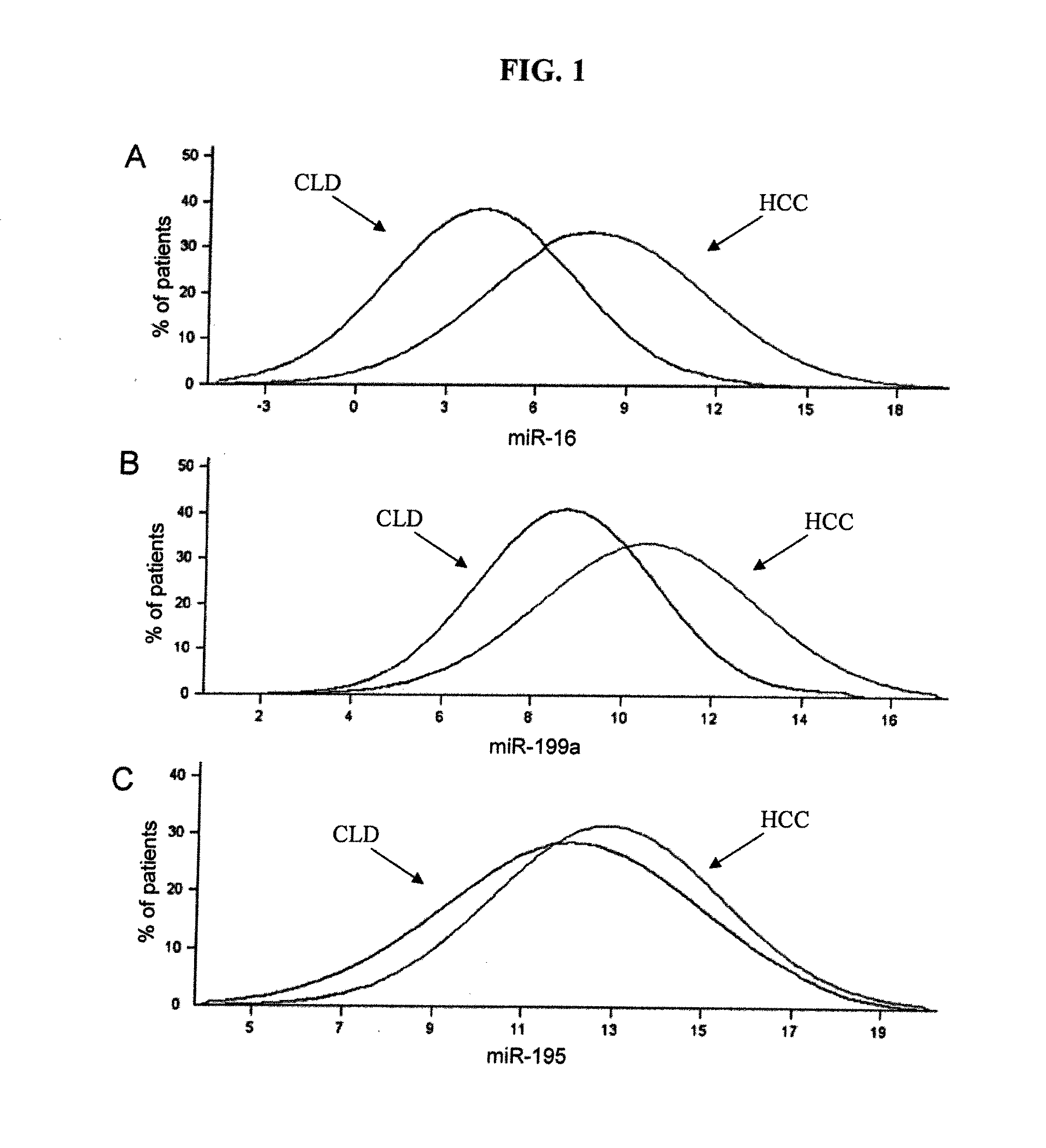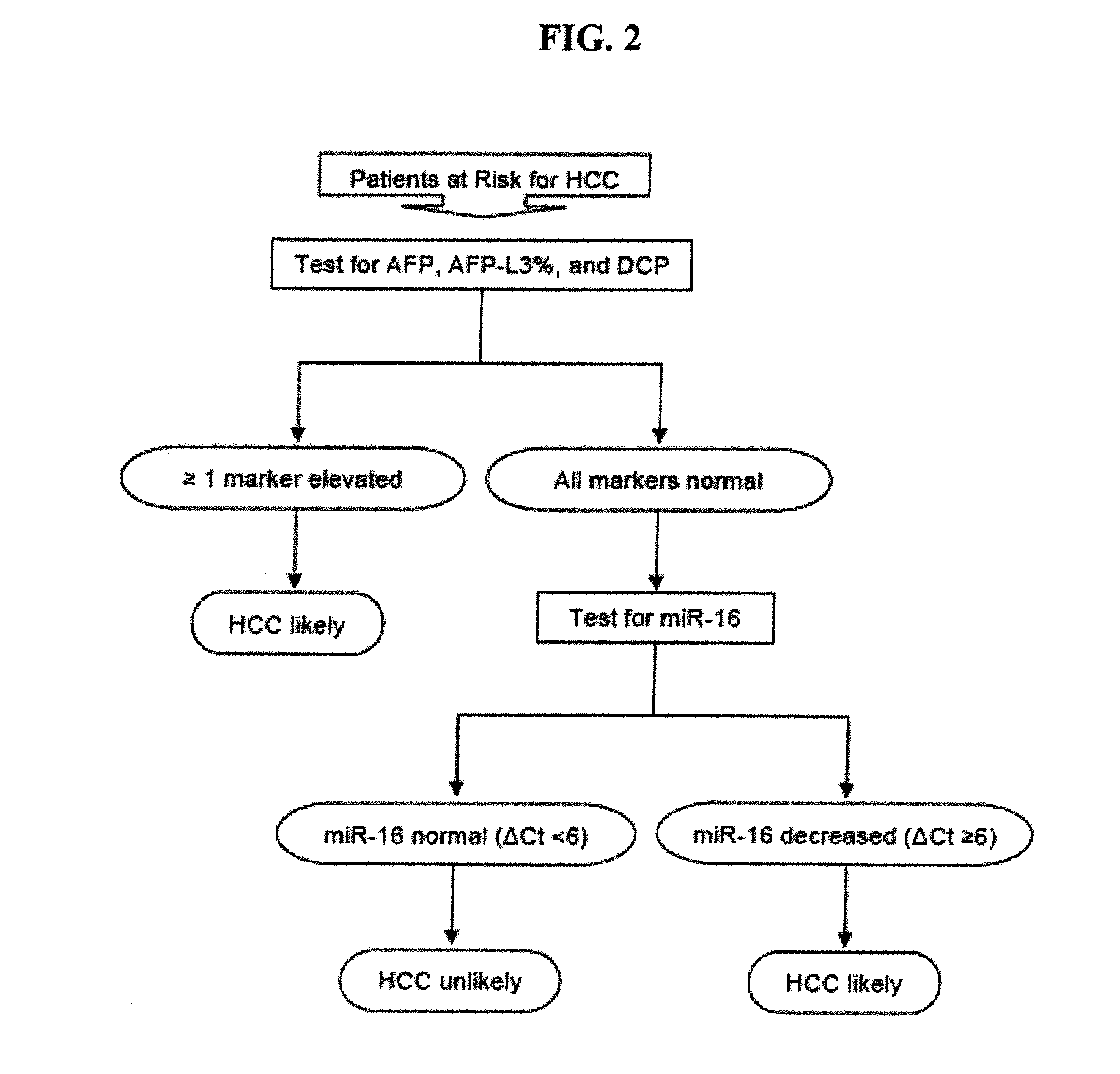Circulating microrna as a marker for hepatocellular carcinoma
a circulating microrna and hepatocellular carcinoma technology, applied in the direction of instruments, biochemistry apparatus and processes, material analysis, etc., can solve the problems of variable effectiveness of tools, serological studies lacking sensitivity and specificity in patients with small tumors
- Summary
- Abstract
- Description
- Claims
- Application Information
AI Technical Summary
Benefits of technology
Problems solved by technology
Method used
Image
Examples
example
[0092]The present methods and kits, thus generally described, will be understood more readily by reference to the following examples, which are provided by way of illustration and are not intended to be limiting of the present methods and kits. The following is a description of the materials and experimental procedures used in the example.
Materials and Methods
[0093]Study Subjects. A total of 283 subjects were studied. The first group consisted of 105 patients with liver cirrhosis complicated by HCC. The diagnosis of HCC was confirmed by biopsy and histological evaluation or detection of new hepatic lesion with arterial phase enhancement on computed tomography or magnetic resonance imaging. The second group included 107 patients with chronic liver diseases (CLDs) and no HCC. All patients had biopsies reviewed by a pathologist, fibrosis staging between 0 and 4 (metavir scale), and variable degrees of inflammation. The clinical follow up in this group included ultrasound and AFP measur...
PUM
| Property | Measurement | Unit |
|---|---|---|
| diameter | aaaaa | aaaaa |
| Fast real time PCR | aaaaa | aaaaa |
| Fast real time PCR | aaaaa | aaaaa |
Abstract
Description
Claims
Application Information
 Login to View More
Login to View More - R&D
- Intellectual Property
- Life Sciences
- Materials
- Tech Scout
- Unparalleled Data Quality
- Higher Quality Content
- 60% Fewer Hallucinations
Browse by: Latest US Patents, China's latest patents, Technical Efficacy Thesaurus, Application Domain, Technology Topic, Popular Technical Reports.
© 2025 PatSnap. All rights reserved.Legal|Privacy policy|Modern Slavery Act Transparency Statement|Sitemap|About US| Contact US: help@patsnap.com


